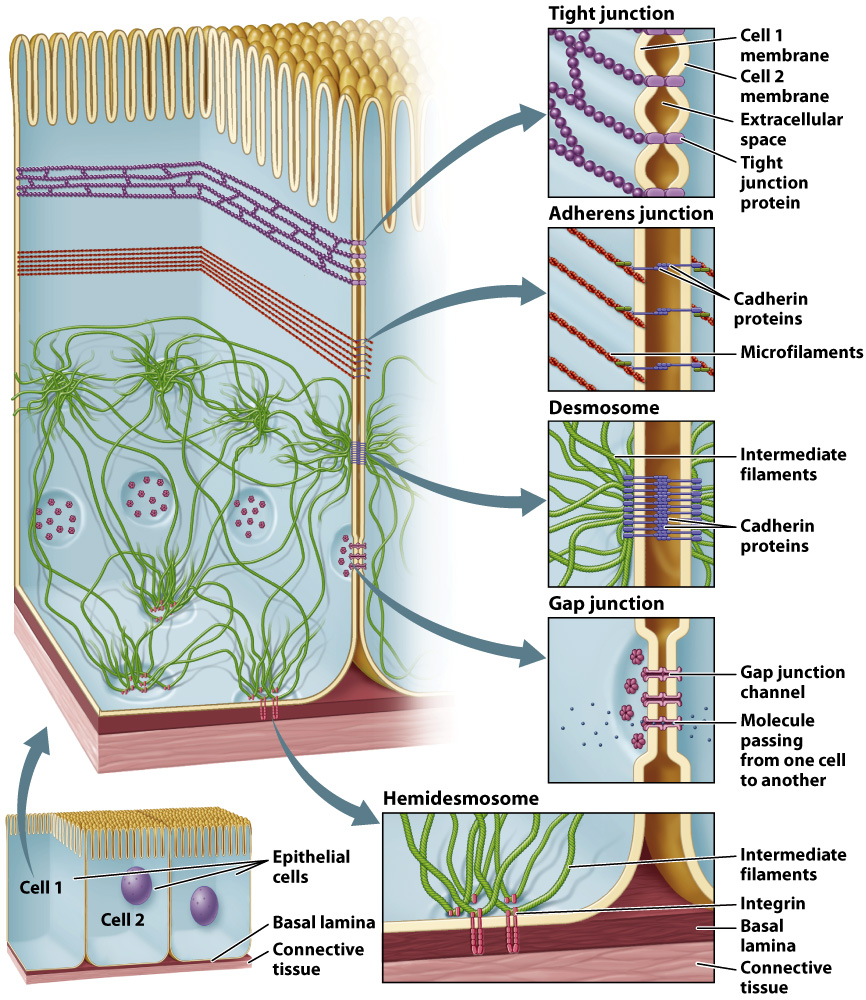Anchoring junctions connect adjacent cells and are reinforced by the cytoskeleton.
Cadherins and integrins are often organized into cell junctions, complex structures in the plasma membrane that allow cells to adhere to one another. These anchoring cell junctions are of two types: adherens junctions and desmosomes (Fig. 10.14).

In our earlier discussion of microfilaments (section 10.2), we saw that a long bundle of actin microfilaments forms a band that extends around the circumference of epithelial cells, such as the epithelial cells that line the intestine. This band of actin is attached to the plasma membrane by cadherins in a beltlike structure called an adherens junction (Fig. 10.14). The cadherins in the adherens junction of one cell attach to the cadherins in the adherens junctions of adjacent cells. This arrangement establishes a physical connection among the actin cytoskeletons of all cells present in an epithelial layer of cells.
Like adherens junctions, desmosomes are cell junctions that allow cells to adhere to one another. However, unlike adherens junctions that form a belt around the circumference of cells, desmosomes are buttonlike points of adhesion (Fig. 10.14). Cadherins are at work here, too, strengthening the connection between cells in a manner similar to adherens junctions. Cadherins in the desmosome of one cell bind to cadherins in the desmosomes of adjacent cells. The cytoplasmic domain of these cadherins connects to intermediate filaments in the cytoskeleton. This second type of physical connection among neighboring cells greatly enhances the structural integrity of epithelial cell layers.
Epithelial cells are not only attached to one another, but also to the underlying extracellular matrix (specifically, the basal lamina). In this case, the cells are firmly anchored to the extracellular matrix by a type of desmosome called a hemidesmosome (Fig. 10.14). Integrins are the prominent cell adhesion molecules in hemidesmosomes. The extracellular domains bind extracellular matrix proteins, and the cytoplasmic domains connect to intermediate filaments. These intermediate filaments connect to desmosomes in other parts of the plasma membrane. The result is a firmly anchored and reinforced layer of cells.
Quick Check 2 Adherens junctions and desmosomes both attach cells to other cells and are made up of cadherins. How, then, are they different?
Quick Check 2 Answer
Adherens junctions form a belt around cells, whereas desmosomes are button-